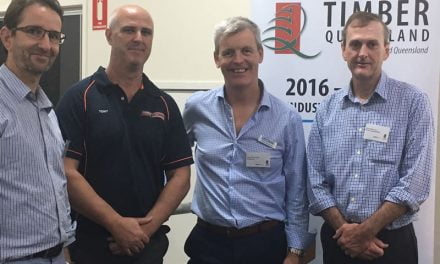My dad spent a large part of the 60s to 80s in pubs or on racecourses. He was something of a ‘wild boy’, who my mother has only ever been able to partially tame.
As a result, I think I have been something of a disappointment to him. I spent my young days studying hard and being nice to my girlfriend.
Evidence of his disappointment was clear when I was about 21, and was mistakenly scrutinised by a private investigator. I was at work at a garage, pumping petrol, and Dad rang conspiratorially to tell me that, not only was there a private investigator at home asking questions about some car crash, but that he was ringing me so that I could, “Make a getaway!”
Looking back, I actually believe he was hoping that I was guilty.
The early days of the truss industry were, perhaps, as wild as my dad. When computerised truss design software was in its infancy, the choices you had were simple. Try for instance, choosing between standard trusses and truncated girders as the only two truss types. And for roof tile weights, the choice was between concrete and terracotta tiles (at about 50 kg/m² to 57 kg/m² respectively).
Nowadays, for better and for worse, life is more sophisticated. You can choose from all sorts of wild and wacky truss types and load configurations, and you can choose from a greater range of tile loads or even input your own customised load.
I have done a little bit of research on the weight of terracotta roof tiles currently on the market, and have investigated the effect of the varying weights upon a truss design. The table above provides information about what I have found so far, but there could be even more that I have missed.
As you can see, there is a great range of weights within terracotta tiles. Up to 60 per cent of the tiles are on the heavy side.
The effect of these varying weights upon the cost of truss design is not as great as the variability present within the tile itself.
This is because the weight of the roof battens, the trusses themselves, and the ceiling lining, as well as other types of design criteria such as bottom cord deflection, wind loads, and minimum sizes, tend to dilute the potential effect of the tile weight.
When making approximations for the typical effects of all of these factors combined, I reckon that the variability of terracotta tile weight can, potentially, make up to a 40 per cent difference in the cost of a roof.
Turn this analysis around, and you could conceivably under-design a roof by 40 per cent, if you assumed the incorrect low terracotta tile weight.
If the conclusion is not obvious, for the sake of both safety and economy, you need to design your trusses for a specific terracotta tile type, and not for a generic load. Obviously that presents a problem when the tile model has not been chosen at the time of your design, and sorting that out is why some of us get paid the big dollars!
You would not believe it, but within months of the car crash episode, another private investigator was chasing me! At the time I was racing off-road buggies, and I turned up to look at a concrete weir as part of my studies. I noticed a car was sitting there in the weir in a spectacular cloud of dust. By luck, it was a stolen car that had been dumped the night before, and someone took my registration down thinking I had come to revel in the scene of my crime.
This time, the private investigator turned up when I was at home with my parents. Dad invited him in, gleefully, but once again ended up being a very disappointed man.
Maybe at that point I should have let on about the bad things that I really did do in my twenties!
Paul Davis is an independent structural engineer managing his own consulting firm Project X Solutions Pty Ltd. The views in this column are Paul’s and do not reflect the opinions of TimberTrader News.
Phone: 02 4576 1555 Email: pauldavis@timbernews.com









